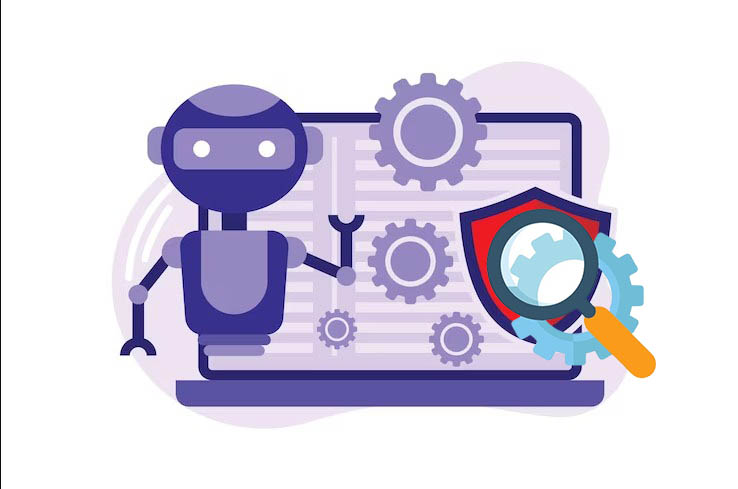Usability testing also referred to as user experience UX testing, assesses a system or product by seeing how actual people engage with it. Evaluating usability, accessibility, and general user happiness is the main objective. To improve the user experience, you may find possible problems, get feedback, and make well-informed changes via UX testing.
Why UX testing is necessary?
Imagine creating a stunning home without taking the wants and comfort of its occupants into account. In a similar vein, a product that looks good could not offer a fulfilling customer experience. UX testing ensures that your product meets user expectations, reduces annoyance, and creates a great user experience.
Together, prototyping and UX testing enhance the planning cycle. User testing not only helps you keep the user in mind; it likewise seems OK. Before putting the product on the market, you can spot design flaws and usability issues by testing your concepts early and frequently. There are numerous advantages to this for the business, the user, and you!
Top 5 UX Testing Strategies
The following are five of the most well-known QA automation testing services strategies utilized by UX testing planners and plan masterminds!
1. Concept testing Before actually designing your ideas, you should UX testing them out in the very early stages of the design process. Performing a UX audit to assess usability risks and alignment with user expectations helps identify fundamental gaps early, ensuring the concept is intuitive and viable before investing in high-fidelity designs or development. You can use simple sketches or even static images as low-fidelity prototypes to show your idea to your intended audience. After that, you’ll conduct interviews with your customers to find out how they feel about the idea. Is it an item or component they’d inspired by use? Does it can possibly tackle the client’s concern? Here is more information about the importance of concept testing in UX design.
2. Using A/B testing, two distinct versions of a design are compared. This UX testing strategy can be utilized at any phase of the plan interaction, whether you have paper models or completely interactive advanced ones. In A/B testing, you will make two distinct prototypes and test each one with a different set of users. You could test two distinct designs, for instance, or different duplicates for a specific CTA button on a specific screen. To avoid skewing the results, it’s critical to only test one variable at a time in an A/B test. You’ll track down a total manual for A/B testing on models here.
3. Ease of use testing
A vital client UX testing strategy that ought to be utilized over and over all through the planning cycle, convenience testing shows you how simple you plan to utilize. UX testing typically involves observation: As part of a task analysis, you’ll ask your users to complete certain tasks and track their progress. All through the test, you’ll see which parts of the plan created issues for the client, as well as which perspectives have all the earmarks of being easy to understand. In doing so, you’ll recognize convenience issues, which you’ll try to fix in the following cycle of your model. This step-by-step guide will teach you more about how to conduct UX testing.
4. First-click testing When designing an app or website, you want to make sure that every time a user lands on a particular page or screen, they do what you want them to do. First-click testing reveals your users’ initial actions when interacting with an interface. To put it another way, where do they first click? This helps you decide which content and visual elements should take precedence, where to put buttons, icons, and menu items, and what language to use for labels and buttons. First-click testing can be led utilizing both low and high-constancy models. You’ll track down an exhaustive manual for first-click testing here.
5. Tree testing: You can use tree testing to determine how user-friendly your digital product is once you have developed its information architecture. You’ll give the client a “tree” of data delegate of how your site menus would be spread out — and request that they track down unambiguous things. Assuming UX testing clients battle to find specific data, you’ll have to reconsider your data engineering our manual for AI in UX testing configuration can assist with this. Tree testing can be carried out in person using paper prototypes or as a remote, unmoderated study.
UX Testing Advanced Techniques
Instructions to direct client testing: A step-by-step guide Now that you are familiar with some common methods for user testing, let’s move on to the details. Regardless of the method you choose, there are certain steps you must take when conducting user tests:
Set a goal: The absolute first thing you’ll have to do is set a reasonable goal. What is it that you need to gain from your client tests? Which inquiry do you hope to address? Choosing the best method for user testing and building the right prototype will be easier if you have a clear goal in mind. For instance, Assuming you’re planning an internet business application, your goal may be to test the way simple it is for your clients to add a thing to their list of things to get.
Construct your prototype: You are aware of the test objectives; presently it is the ideal time to assemble your model. You will stick to low-fidelity prototypes when testing an idea in its very early stages. Mid- and high-fidelity prototypes can be used to test the finer details of a concept, such as information architecture or microcopy.
Make an arrangement: It is essential to devise a strategy for your user testing session to ensure consistency. Include your goal or question in your plan; the strategy you intend to employ for evaluating your prototype, the number of users you intend to test with, a list of everything you’ll need for the project, and how you intend to record and evaluate your findings. Contingent upon your picked strategy, you may likewise need to make content to keep the meeting centered.
Participant recruitment: One more significant part of client testing is selecting the right members. Spend some time determining some essential criteria because you want to test on users who are representative of your target audience. If you’re planning an over-50s dating application, for instance, it wouldn’t check out to run client tests with a gathering of long-term olds.
Collect all of the necessary tools: You are prepared to start the session now that you have recruited the participants. Check everything you need to take the tests by referring back to your plan: screen recording programming on the off chance that you’re leading remote testing, pens and paper for taking notes, and, obviously, your model!
Record your discoveries: Be sure to record your results after each user test. To evaluate your observations and compare the outcomes of each session, you will need a thorough record of each test.
Testing…..Testing….
After a series of client tests, you’ll have to invest some energy in dissecting the outcomes. You’ll search for designs in what you’ve noticed and the criticism you got. Your tests will either point out problems that need to be fixed or confirm that something works well. One way or another, the bits of knowledge you assemble from client testing will illuminate your following stages. Do you have to emphasize on the ongoing plan to fix an ease-of-use issue? Have you returned to the ideation stage after your initial concept completely failed in front of your customers? It’s possible that the results of your test users demonstrated that your information architecture is extremely user-friendly, indicating that you are prepared to begin enhancing the design.
Until your product is ready for launch, UX testing is all about iterating and reiterating. However, it doesn’t stop there! Indeed, even once your item is available, you’ll keep on running tests and adding new highlights or making enhancements.
Prototyping and testing are totally key to making easy-to-understand items, so make sure to test early and frequently!
Read More:
We will discuss the various AI testing tools available in the market, their capabilities, and how they can help identify potential issues in the early stages.



